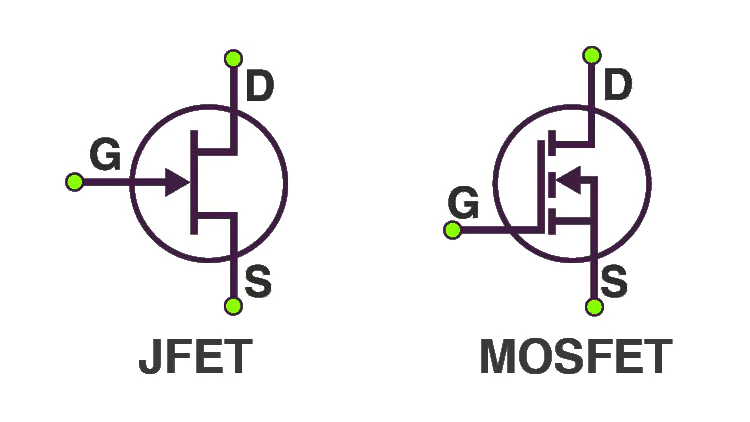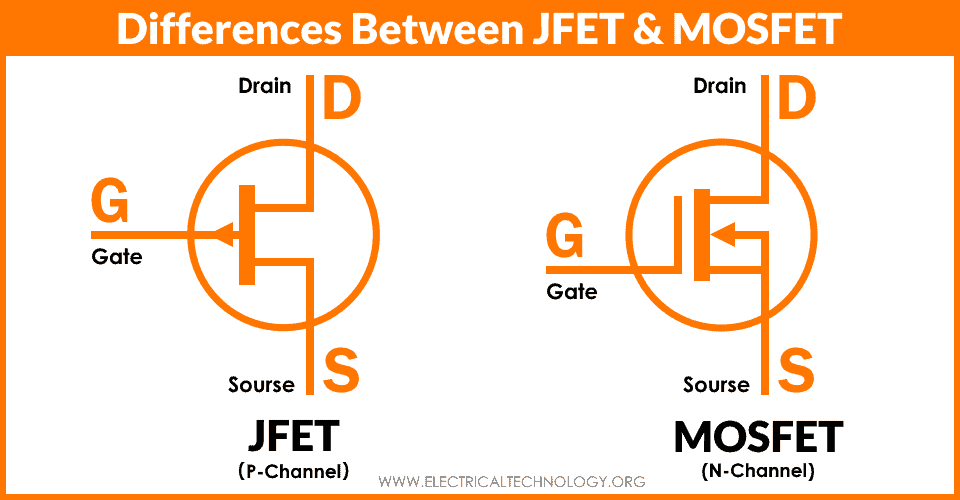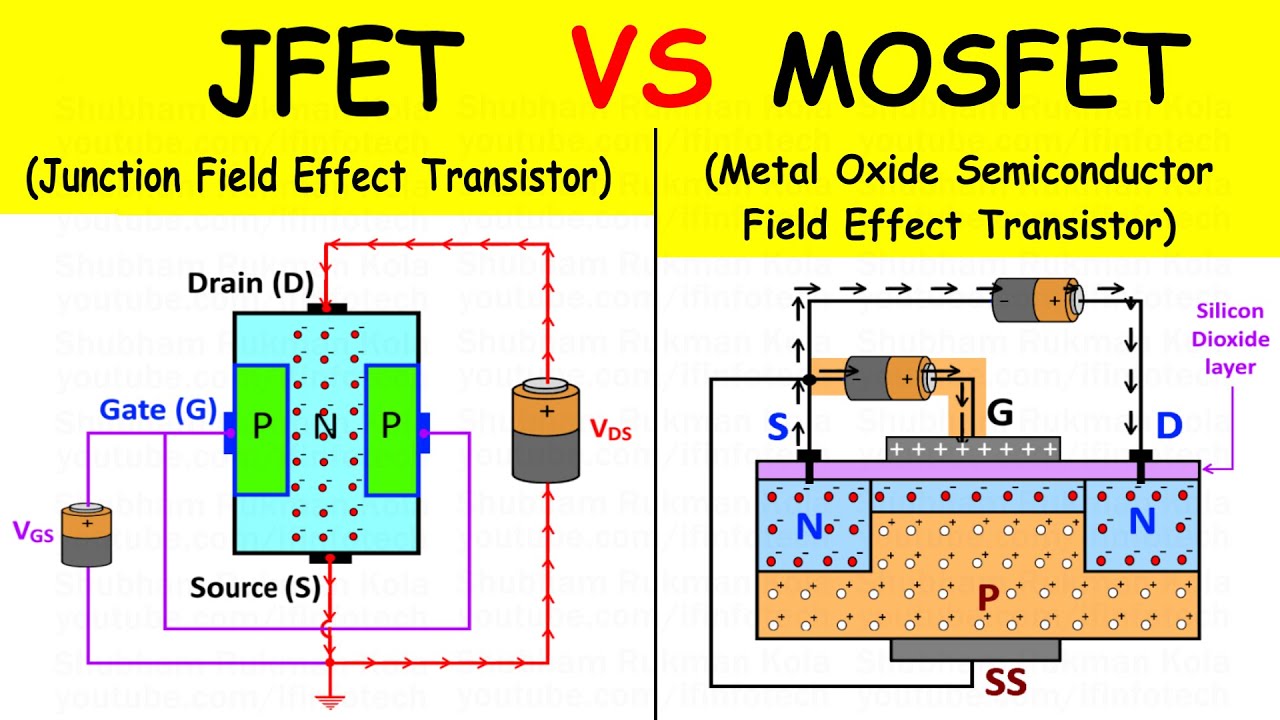Alright, so I’ve been getting a bunch of questions about MOSFETs versus JFETs. People see these things in schematics, or maybe they’ve got a handful of each in their parts bin, and they’re wondering, what’s the actual, practical difference when you’re down in the trenches, soldering iron in hand? Forget the datasheets for a minute, let me walk you through what I found out just by messing around on my own workbench.

My Early Days: The JFET Adventure
Way back, when I was first really digging into building my own circuits, I stumbled upon JFETs. I think I ordered a batch of MPF102s or something similar, just because I read somewhere they were good for radio stuff or high-impedance audio inputs. So, I got ’em, and I was all excited to make, like, the ultimate guitar preamp or something.
First thing I did was try to build a simple common-source amplifier. And man, that’s where I hit my first wall. These JFETs, at least the N-channel depletion-mode ones I had, are kinda “normally on.” That means they conduct even with zero volts on the gate. To control them, to turn them down or off, I had to apply a negative voltage to the gate relative to the source. This was a pain. I was used to NPN BJTs where you just put some positive voltage on the base and they turn on. Suddenly I needed a negative supply rail or some fiddly voltage divider tricks to get the biasing right. It felt… backward at first.
- Biasing struggles: Seriously, getting a stable bias point felt like black magic sometimes. The parameters for JFETs, like Vgs(off) and Idss, can vary a LOT even between parts from the same batch. So, what worked for one JFET might make the next one barely conduct or run way too hot. Lots of trial and error.
- Gate current? Nope: One cool thing, though, was that the gate draws practically zero current. It’s like an open circuit, which is awesome for not loading down a sensitive signal source.
- Tough little guys: They also seemed pretty robust. I wasn’t super paranoid about static electricity with them. I mean, I wasn’t trying to abuse them, but they didn’t feel as fragile as some other components.
I spent a good few evenings trying to get a really consistent and predictable JFET circuit going. I learned a ton, mostly about how not to do things, and how much part-to-part variation can drive you nuts. I did get some decent audio sounds out of them eventually, kind of warm, but it always felt like I was wrestling them into submission.
Discovering MOSFETs: A Different Beast
Then, I started playing with MOSFETs. My first encounter was probably with some common N-channel enhancement-mode MOSFETs, like a 2N7000 or a BS170. The “enhancement mode” part was key for me. These guys are “normally off.” You put zero volts on the gate, and nothing happens. You apply a positive voltage (for N-channel) to the gate, and they start to turn on. This felt much more intuitive for switching applications right off the bat.
The gate is king, but fragile: The gate on a MOSFET is super, super high impedance. Even higher than a JFET. It’s basically a tiny capacitor. This is great because it takes virtually no current to keep it on or off. But, and this is a BIG BUT, that thin oxide layer insulating the gate is incredibly delicate. Static electricity is its mortal enemy. I learned this the hard way. I swear I zapped a few just by looking at them funny before I got religious about grounding myself and using anti-static precautions. Suddenly, all those warnings in datasheets made a lot more sense.

- Easier to turn on/off (mostly): For basic switching, they felt much simpler. Need to turn on an LED from a microcontroller? MOSFET. Easy. No complicated biasing for on/off states.
- Voltage control: They are voltage-controlled devices, plain and simple. More voltage on the gate (up to a point), more current it can pass.
- Power handling: And then there are the power MOSFETs! These things can switch huge currents and voltages. I started using them for motor control, power supplies, all sorts of beefier projects. That was a game-changer.
So, What Did I Settle On in Practice?
It’s not like one is always better than the other. It really, really depends on what you’re doing.
For JFETs: I found they have their niche. If I need super low noise in certain audio input stages, or that specific “tube-like” characteristic some folks talk about, I might reach for a JFET. They can be great for things like buffers for high-impedance sensors too. But I always go in knowing I might have to hand-pick them or be ready for some careful tweaking with the biasing. They feel more like analog artists’ tools – a bit temperamental, but capable of unique results.
For MOSFETs: These became my go-to for a lot of general-purpose work, especially switching. Enhancement-mode MOSFETs are just so straightforward for turning things on and off with a voltage signal. The logic-level gate ones are a dream to drive directly from microcontrollers. And for power applications, they’re indispensable. Yes, you gotta be careful with static, but once you get your handling routine down, it’s manageable. They feel more like workhorse components.
So, when I’m prototyping now, if it’s a simple switch or I need to drive something with a bit of current from a logic signal, I almost always grab a MOSFET first. I make sure my bench is grounded, I touch something metal, and I get to work. If I’m working on a very sensitive analog front-end, or something where the unique properties of a JFET might shine, then I’ll pull those out. But it’s always a conscious choice based on the headaches and benefits of each.
It’s just about knowing your components, their quirks, and what you’re trying to achieve. Both have their place in my parts drawers, and both have taught me a lot, usually through a puff of smoke or a circuit that just wouldn’t behave!


